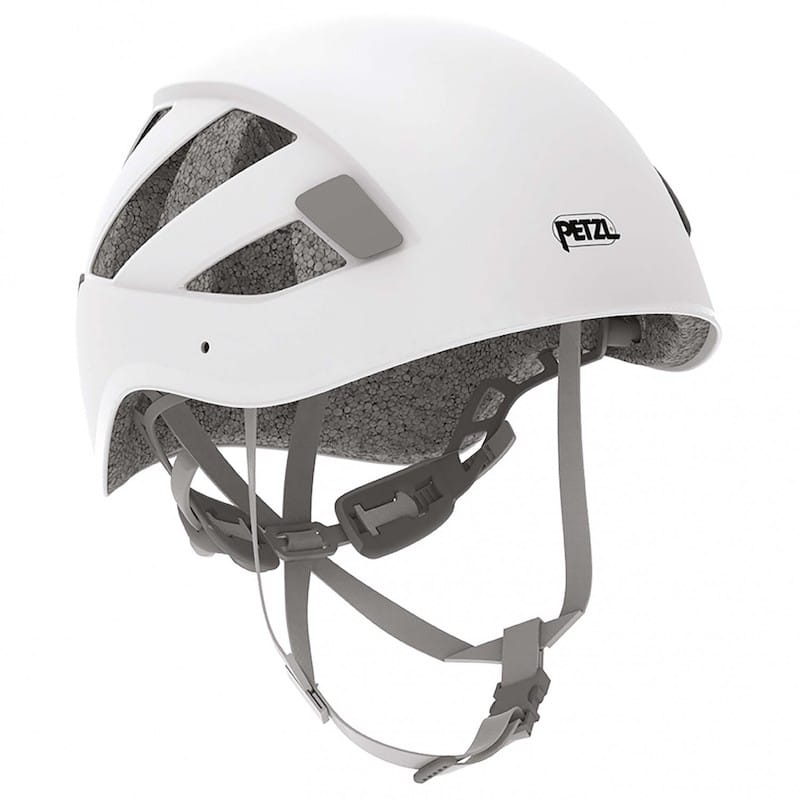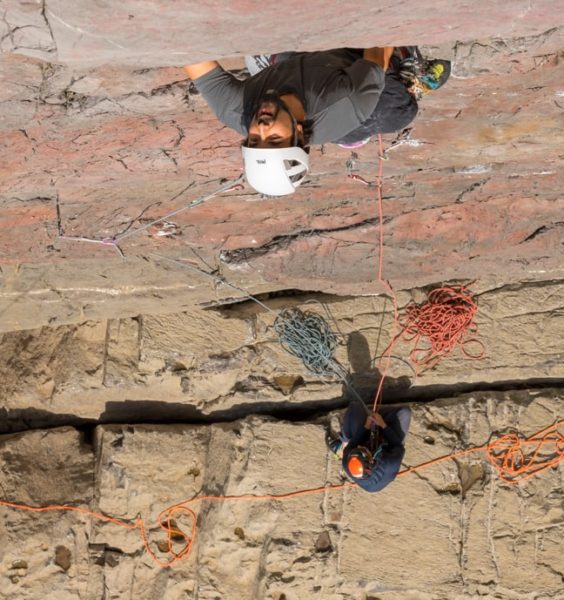Steroid Power, a 5.11d in Rifle, is a favorite warmup that I’ve done a million times. Last year, on an early season lap, I unexpectedly ripped a hold off the wall as I neared the top of the climb. This sent me into a 35-foot upside-down headfirst gainer. As I watched the wall whizz by, inches from my skull, I instinctively tried to right my body but was unable to overcome the forces at work—I actually tore my diaphragm in the process of trying to get myself upright.
I slammed into the wall. Aside from a few bruises and a strained/torn diaphragm that healed up a few weeks later, I was fortunately OK. The most difficult part was accepting that I was just utterly and completely lucky not to have gone headfirst into a ledge.
Breaking goddamn holds. This is why I don’t free solo. It’s also why I should always wear a helmet when I climb. You should too.
The Petzl Boreo is a recent addition to climbing-helmet market that caught my eye in part because it’s one of the few helmets out there that is rated to protect against both top and true side impacts.
I can’t tell you how many accident reports I edited over my years at Rock and Ice magazine in which someone would fall, usually upside down, and sustain a horrible head injury despite the fact that he was wearing a helmet. Side impacts are just as common in climbing falls, which is why we should be paying more attention to climbing headwear that protects against such situations.

Specifications
Mapped foam density for targeted protection
Hardshell design prevents the normal dings in the foam
10 oz
This post contains affiliate links that help support Evening Sends.
Petzl Boreo: Top and Side Protection
All climbing helmets have UIAA and EN certifications that set safety requirements for what kind of forces a helmet needs to sustain. To achieve this certification, the helmet is tested in the “10 o’clock to 2 o’clock” range of the helmet. Petzl has developed its own in-house testing protocol that extends these tests to the side edges and back edge of its helmets—from “9 to 3 o’clock,” so to speak.
Those helmets that pass Petzl’s in-house test are given the “Top and Side Protection” product label, which you can see on Petzl’s website.
To get the Top and Side Protection badge, Petzl drops a 5-kilogram (11 pound) mass on the lower front, rear, and side parts of the helmet from a height of 19.6 inches. To pass the test, the helmet must not transmit a force greater than 10 kN to your dome-piece.
This honestly isn’t all that dissimilar from the requirements already enforced by the normal EN and UIAA certifications; just an extension of it to all points of the helmet. It is nice to know that all parts of your helmet are tested, rated, and strong enough to sustain an impact like my near miss described above.
This video from Petzl explains more about the Top and Side Protection certification.
Hard Shell, Long Life

I brought the Boreo with me on a recent trad-climbing trip to Wales and was happy to have it on the sea cliffs of Gogarth, which ihc sn’t known for its particularly solid rock. Helmets are mandatory here.
With climbing helmets, there are basically two styles available: ones with a hard polycarbonate shell encasing hard foam, and those that are just bare hard foam and no shell.
The Boreo has an ABS shell encasing two types of hard heavy-duty foam. The shell adds a lot of weight to the Boreo when compared to the bare-foam helmets—still, the Boreo is only 11 ounces. At under a pound, it’s truly hard even to notice the Boreo is on your head.
Having now tried to use bare-foam style helmets, even though they are now coming in at around 6 ounces, a shockingly light weight, I have to say that I prefer climbing helmets with a hard polycarbonate shell. They just stand up much better to all the hard knocks of being carried on the outside of your back, thrown around at the base of crags/walls, and being scuffed up over the course of a climbing day.
Other Features
The Boreo is easy to adjust and comfortable to wear. Just open up the helmet to its wider size, put it on your head, and push the two ratchets at the back of the head together to achieve a nice, snug fit. It also has clips that make donning a headlamp easy to do without even taking the helmet off. I also like the simple and understated/timeless colors, which buck the latest trends of goofy graphics and audacious colors.



Recent Comments